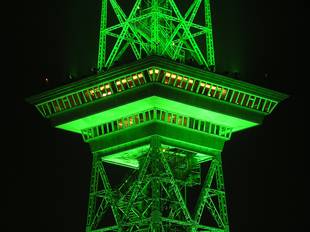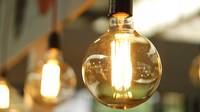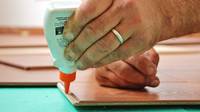
From stickers to toys, an object's ability to glow in the dark instantly adds to its appeal. Making things glow in the dark is a simple matter of chemistry.
The most common way of making an object glow in the dark is to use chemicals called phosphors. These kind of glow-in-the-dark objects need to be exposed to light, or charged, in order to glow. The light energizes the phosphors and excites their electrons. As the electrons lose this extra energy, they release it as a light of their own.
Scientists have created numerous phosphors in the lab, but zinc sulfide and strontium aluminate are the ones that are most commonly used in glow-in-the-dark products, with strontium aluminate being the longer lasting of the two.
On rare occasions, something will glow in the dark without needing to be charged. These items still use phosphors to create the glow, but they add a radioactive element like radium to the compound. The radioactive element gives off small amounts of radiation, not enough to be dangerous, that constantly charge the phosphors in the same way a light would. Radiation-charged phosphors are typically used on clock or watch hands that need to glow hours after a light has been turned off.
Another way to make objects glow in the dark is through chemiluminescence, a chemical reaction. Two chemicals are mixed together, and the resulting reaction causes electrons to become excited, moving to a higher energy level. When the electrons return to normal levels, they release light energy, producing a glow. This is the type of reaction that is used to create the light in glow sticks.
In nature there are what scientists called bioluminescence. Ever wonder how fireflies give off light? Fireflies perform a natural chemistry which man is still unable to duplicate. The light-producing bioluminescence in fireflies takes split-second-more-than-twenty-chemical-interactions creating the phenomenon of light without heat.


















